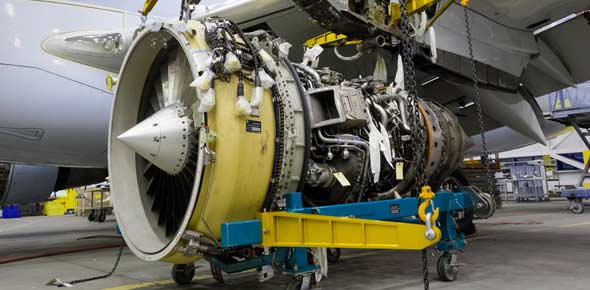What EPU-6/E frequency converter components must be inspected prior to...
During operation of the EPU-6/E frequesncy converter it is determined...
The function of the deswirl ring on the -95 gas turbine compressor is...
What preliminary set-up step, if skipped, prevents the -95 from...
Bubbles in an air conditioner refrigeration system sight glass...
The engine on the MA-3D air conditioner is operating at 1,250 rpm, but...
What type of engine starter does the ACE 802S air conditioner use?
What condition causes erratic operation of the MJ-2A-1 hydraulic test...
During load testing, the table on the MHU lift truck starts to tilt...
A supervisor must document an NCO's safety training on AF Form
What -95 component isolates the second-stage air from the operation of...
What type of refrigeration system leak occurs when the pressure within...
On the SGNSC, the auxiliary air system
What SGNSC components separate the nitrogen from the oxygen?
The -95 does not shut down when the charging rate decreases to 12...
What MJ-2A-1 hydraulic test stand component prevents thermal expansion...
Who determines the length of time it is considered economically...
What prevents overpressurization of the bearing cavity on a -95?
You place the MA-3D air conditioner SW1 in the START position, but the...
What MJ-2A-1 hydraulic test stand switch provides an alternate means...
During operation of the EPU-6/E frequency converter you determine that...
What -95 chambers are pressurized when the butterfly valve is closed?
While you are operating on MA-3D air conditioner, the output air...
What power source operates the heater/combustion section of the new...
The control transformer perform on the EPU-6/E frequency converter...
When the ACE 802S compressor is in the HOLD position, what is the...
On the -95, discharge air pressure at 100 percent engine speed should...
Which of the following components provides 525 VAC to the control...
The three methods of heat transfer are
While you are doing an ops check of an air conditioner, you notice the...
During operation you determine that there is an undervoltage fault...
When heat is applied to an ice cube and the ice starts to melt, it is
The compressor switch on the ACE 802S must be held in the HOLD...
What valve must be opened prior to starting the engine on the ACE 802S...
What adjustment on the new generation heater (NGH) prevents coking in...
The air flowing through an air conditioner is also called
What -95 gas turbine compressor section supplies high-volume,...
What medium is used to lubricate the engine starter on the ACE 802S...
The temperature controller on an MA-3D air conditioner opens the hot...
What MJ-2A-1 test stand component must be readjusted any time the...
During a load test of an MHU lift truck, the operator changes the...
The maintenance organization submits the AFTO Form 375 to
What -95 component closes to complete the electrical circuit to the...
While operating the split deck maintenance platform you realize that...
Which form is used to report a hazardous condition?
What MA-3D air conditioner component controls refrigerant flow into...
What ACE 802S air conditioner system "supercharges" the compressor?
What is the probable cause when the MJ-1B lift truck engine does not...
The -95's rate-metering valve prevents the butterfly valve from...
What MJ-1B lift truck cradle movement is manually operated?
What split deck maintenance platform engine switch position energizes...
What SGNSC component determines the speed of the nitrogen booster...
On the split deck maintenance platform, how is the platform lowered on...
What MA-3D air conditioner safety component de-energizes the...
What MJ-2A-1 hydraulic test stand component must be open to set the...
What EPU-6/E components receive potential directly from the input auto...
How does the photocell on the new generation heater (NGH) verify the...
What MJ-2A-1 hydraulic test stand engine system safety device sounds...
Which one do you like?
What does the heat boost system on the ACE802S air conditioner use to...
What is the first troubleshooting step that must be accomplished when...
When fluid temperature is below 70 degrees F, what must be...
How does the new generation heater (NGH) keep output air temperature...
What split deck maintenance platform component establishes the maximum...
On the split deck maintenance platform, what controls the platform's...
The MA-3D air conditioner radiator fan stops operating. Where do...
The system selector valve on the MJ-2A-1 hydraulic test stand must be...
During MJ-2A-1 hydraulic test stand slosed loop operation, the...
What MA-3D air conditioner component provides 24 VAC for operation of...
What causes the starter solenoid on the SGNSC to disengage during...
The maximum output pressure of the MHU-83C/E lift truck's hydraulic...
When troubleshooting a defective new generation heater (NGH) charging...
The MHU lift truck is operating at governed speed, but the directional...
What ACE 802S air conditioner components divide the refrigerant system...
During SGNSC operation, the HM2 fails to operate. What terminal...
While lowering the MJ-1B lift truck cradle assembly, you notice one...
















